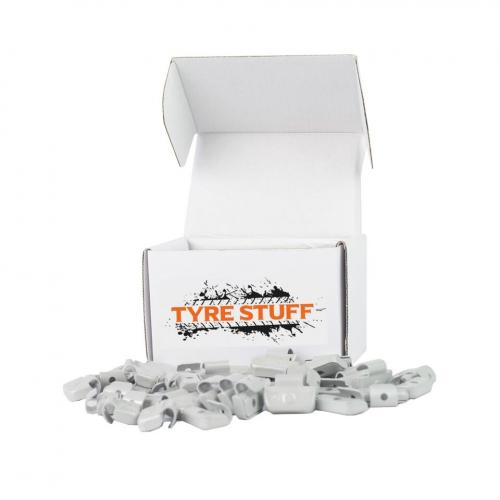
Weights for Alloy Wheels
A full range of knock on wheel weights for alloy wheels. Buy 5 of any size and get 10% off the normal price automatically.
Wheel Balancing with Lead free wheel balance weights
Nearly all passenger wheels will require wheel weights to ensure that the wheel is correctly balanced before it is fitted back on to the vehicle. It is very rare that a wheel and tyre are perfectly symmetrical and evenly weighted and of course, the tubeless valve will also have an effect of the balance.
Therefore, small pieces of metal are used, known as wheel weights or balance weights to ensure that the wheel and tyre don’t give the feeling of vibration at a certain speed. The wheel weights are applied onto various parts of the rim (depending on the fitment) in accordance with the instruction from the wheel balancer.
Lead Free wheel balance weights
Up until around 2011 most balance weights were made from lead due to its density and the fact it is malleable. However, environmental concerns around the use of lead meant that many regions including the UK and US has led to the ban of lead material and now all passenger wheel weights must be lead free. Zinc is a popular choice due to its anti-corrosion properties, but steel is also common as it is widely recycled. Lead motorcycle wheel weights can still be used however.
In California, you can be charged under their health and safety law and be fined up to around £2000 per day is you are using or distributing them!!
Types of Wheel Weights
When wheel balancing there are 2 main types of weights, knock on weights for Steel or Alloy rims and self-adhesive or stick on wheel weights.
Knock on or Clip on wheel weights
These weights are designed to attach to the inside or outside of the wheel rim in order to achieve the correct balance. The difference is in the clip sizes. Knock on weights for steel wheels tend to have a smaller clip with a thinner profile to account for the slimmer profile of the steel wheel. Alloy wheel weights are similar, but have a wider, more forgiving clip for the wider alloy wheel rim.
Self-Adhesive of Stick on Wheel weights
Fairly self-explanatory, these are segments of zinc or steel with an adhesive coating on the back. They generally come in 5g segments or a mixture of 5g and 10g segments. You simply cut or tear off the weight that you need to apply to the wheel. The weights are applied on the inside of the rim in varying places depending what wheel balancing mode you are working with. Most commonly used on Alloy wheels and, with a decent wheel balancer, you should have the ability to split the weights and apply behind the spokes for a hidden weight placement.
Static vs Dynamic balance
You may here the 2 phrases of Static balance and Dynamic balance and wonder what the difference is? Well put quite simply unless you are working on a tyre rim less than 4” wide (100mm), you never need to worry about static balance.
Static balance uses a single weight in one position in the middle of the rim. Dynamic balance uses 2 weights on either side of the rim. The wider the rim gets, the more “unbalanced” the wheel will be no matter what it says on the wheel balancer. There is of course far more to it than that but unless you are balancing classic cars or motorcycles, Dynamic is the only way forward.
Balance beads
When it comes to commercial balancing, balance beads or balance powder is more popular than the standard weights used on passenger wheels. It works on the basis of having ceramic type beads fitted inside the truck tyre, that dynamically balance the tyre while moving. The beads rotate in the tyre and position themselves opposite the heavy spots to provide the balance.
